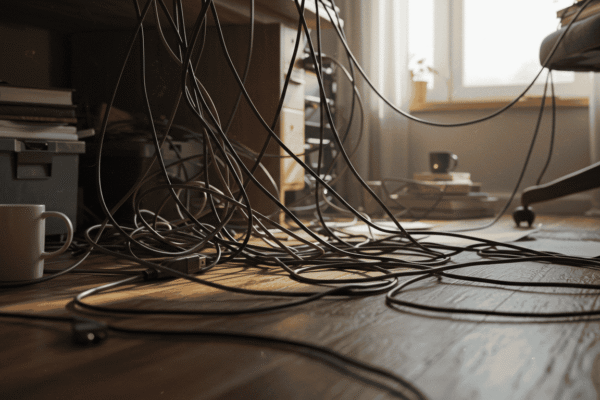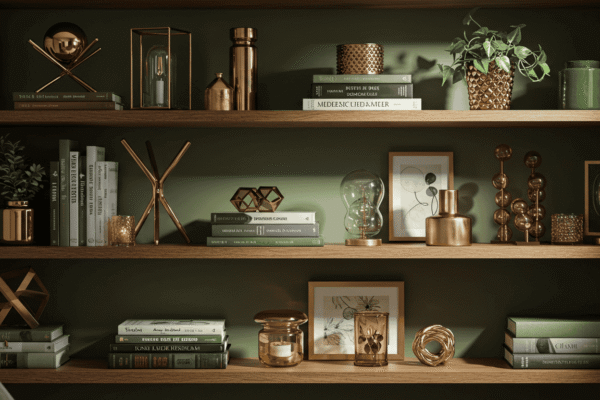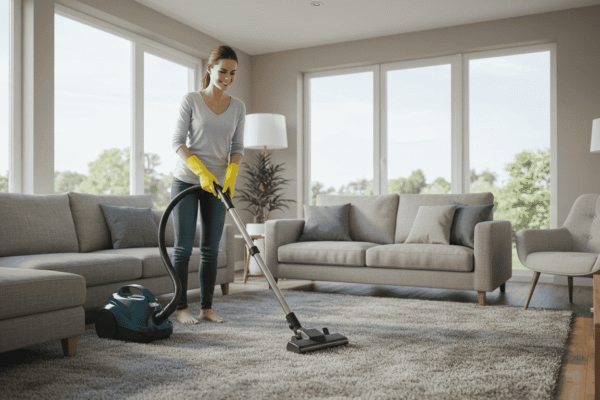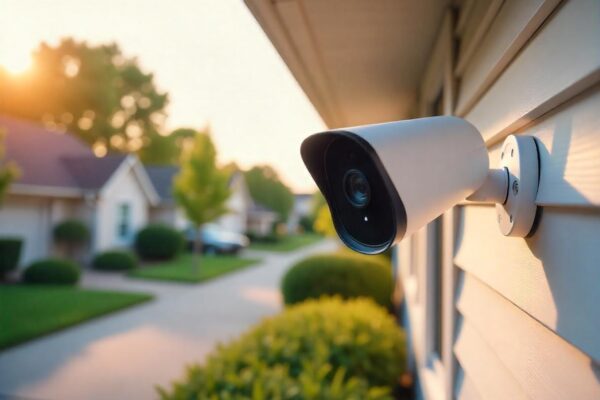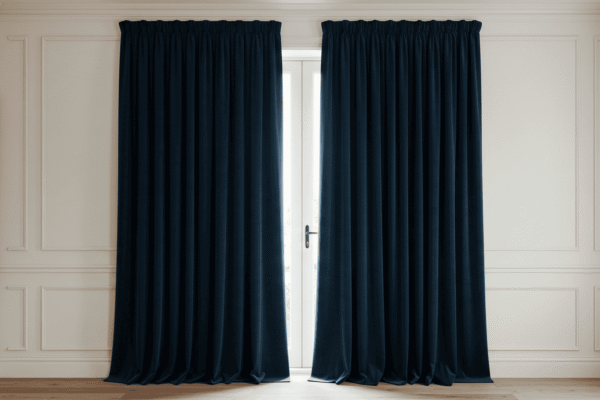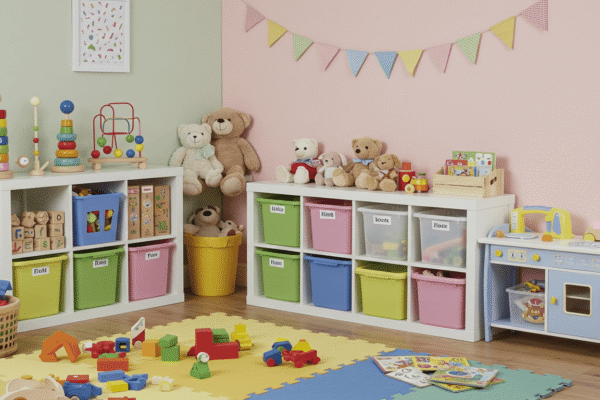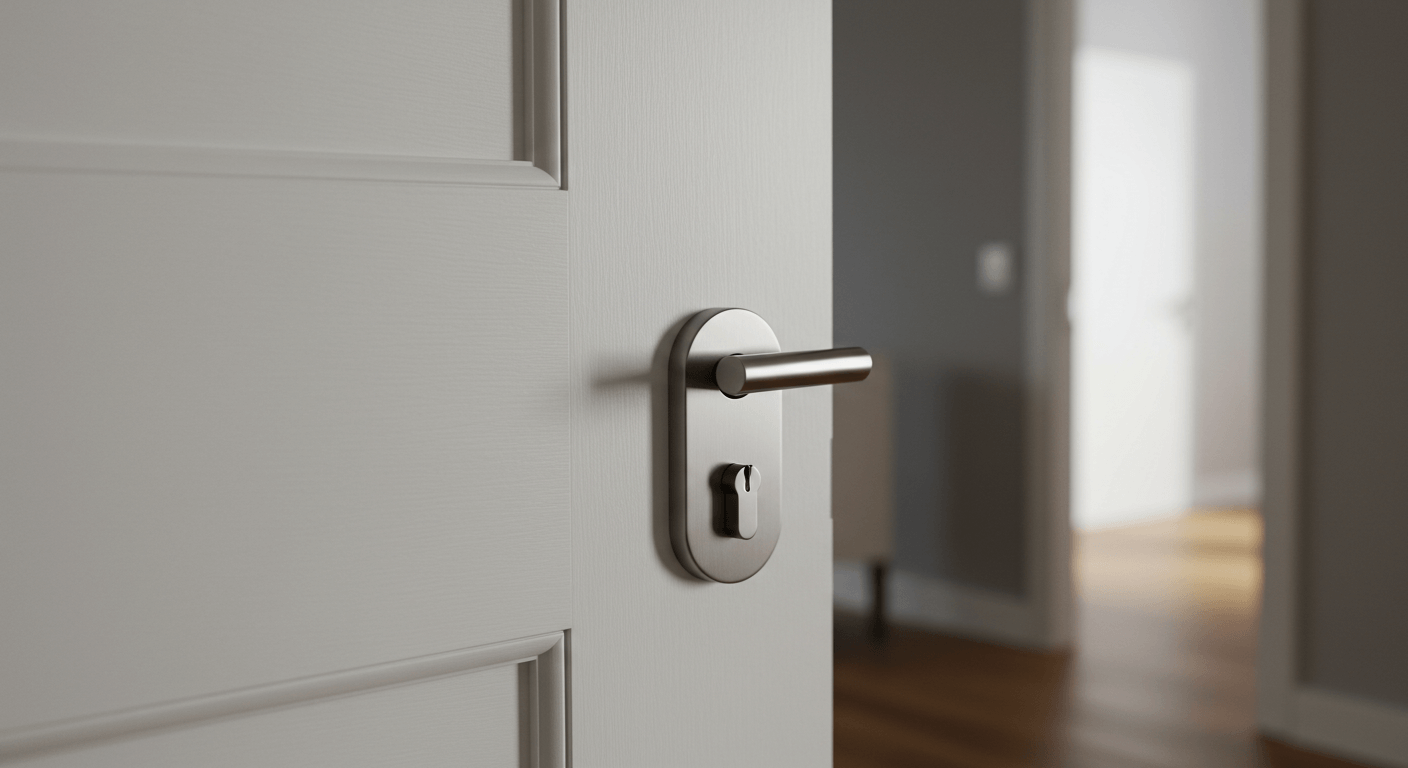Squeaky door noises can quickly turn from a minor annoyance into a constant distraction in your home. Whether it’s that creaky entrance door or a bedroom door that groans every time it moves, a squeaky door affects the comfort and calm of your space. Luckily, fixing a squeaky door doesn’t have to be complicated or expensive. In this post, we’ll explore 5 simple ways to stop a squeaky door from bothering you, including easy door hinge lubrication tips, quick DIY fixes, and maintenance advice that anyone can follow. Say goodbye to that annoying squeak and hello to smooth, silent door movement!
Why Does Your Door Squeak? Understanding the Causes
Before you can fix a squeaky door, it’s important to understand what causes that irritating noise in the first place. Most door squeaks come from parts of the door that move against each other or the frame, creating friction and vibrations. Identifying the root cause will help you apply the right solution and keep your door operating smoothly.
Common Sources of Door Squeaks
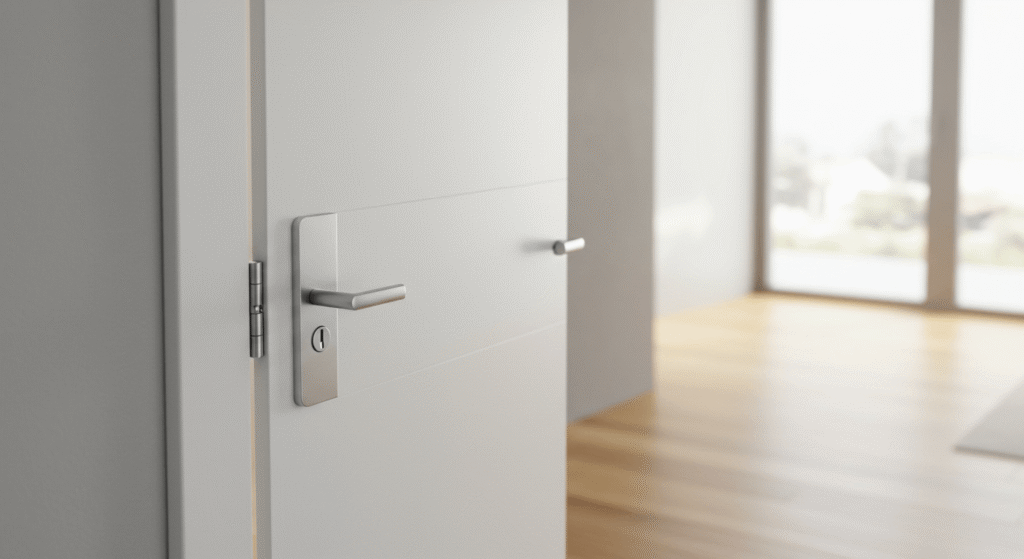
Hinges: The Usual Suspects
The most common source of a squeaky door is the hinges. Over time, dust, dirt, and lack of lubrication cause the metal parts to rub noisily against each other. Worn or rusty hinges can make the noise worse, especially when the door swings frequently. Sometimes, the hinge pins may become loose or misaligned, increasing friction and that telltale squeak.
Misaligned Door Frames and Loose Screws
Another common cause of door squeaking is a misaligned door frame or loose screws. When the door doesn’t fit perfectly within its frame, it can shift or rub against the frame edges, producing a squeak. Loose screws in the hinges or frame allow extra movement, making the noise more noticeable. This can also lead to uneven wear on the door components, worsening the problem over time.
How Squeaks Affect Your Home’s Comfort and Ambiance
While a squeaky door might seem like a minor nuisance, it can significantly impact the comfort of your living space. The repetitive noise can be distracting, especially in quiet rooms or at night. It may also give the impression of poor home maintenance, affecting the overall ambiance. In some cases, persistent squeaks can signal underlying issues that might reduce the door’s effectiveness in insulating sound or maintaining security. Addressing the cause promptly helps maintain a peaceful and well-kept home environment.
| Cause | Noise Type | Impact on Door Function |
|---|---|---|
| Worn or dry hinges | Squeaking, creaking | Difficulty in smooth door movement |
| Loose hinge screws | Intermittent squeak | Door wobbling or misalignment |
| Misaligned door frame | Rubbing squeak | Door scraping against frame edges |
| Dust or debris in hinges | High-pitched squeak | Accelerated wear on door parts |
Step 1 — Inspect Your Door Hinges Like a Pro
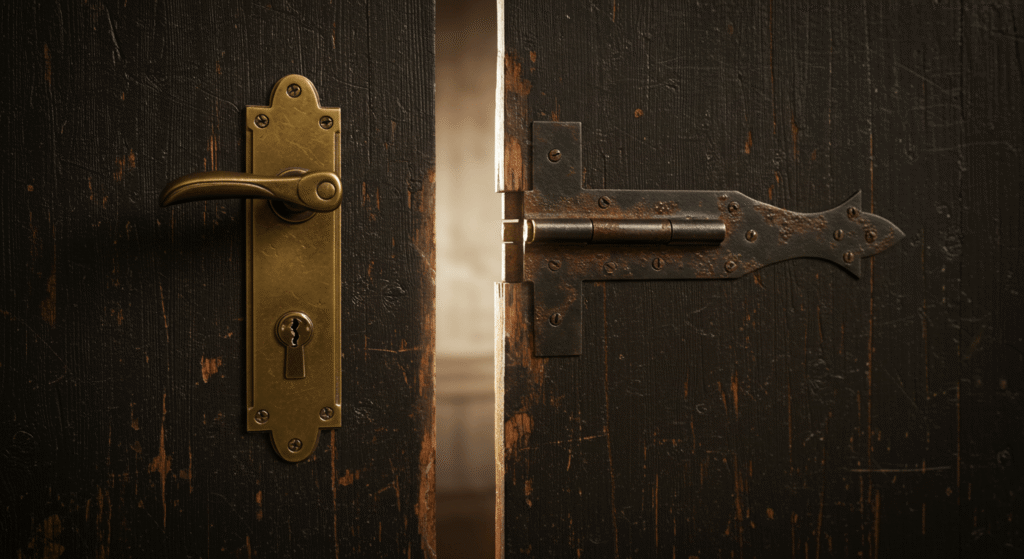
Before diving into fixing a squeaky door, it’s crucial to carefully inspect the hinges. This step helps you understand exactly what’s causing the noise and whether the hinges themselves need cleaning, lubrication, or replacement. A thorough inspection will save time and ensure your repair efforts are effective.
What to Look For: Signs of Wear and Tear
Start by examining the door hinges for visible signs of damage. Look for rust, corrosion, or buildup of dirt and dust that can increase friction and cause that annoying squeak. Check if the hinges are loose or if any screws are missing or partially unscrewed. Worn-out hinges may show gaps between the hinge plates or bent hinge pins, both of which affect smooth door movement. Noticing these signs early can help you decide whether simple lubrication will fix the problem or if you need to replace the hinges.
How to Safely Remove and Check Hinge Pins
If the squeak persists after a visual check, removing the hinge pins is a great way to clean and lubricate the hinges thoroughly. To do this safely, first support the door to prevent it from dropping once the pins are removed. Use a flat tool or a small hammer and a punch to gently tap the hinge pin upwards from the bottom. Carefully slide the pin out and inspect it for rust or bending. Clean the pin and inside the hinge with a cloth before applying lubricant. Reinsert the pin securely and test the door movement.
Tip Box: Quick safety tips for handling door hardware
- Always support the door before removing hinge pins to avoid injury or damage
- Use proper tools like a flathead screwdriver and hammer gently to avoid bending pins
- Wear gloves to protect your hands from sharp edges or rust
- Work slowly and carefully to avoid stripping screws or damaging the hinge plates
Step 2 — Lubricate the Hinges: The Secret to Silence
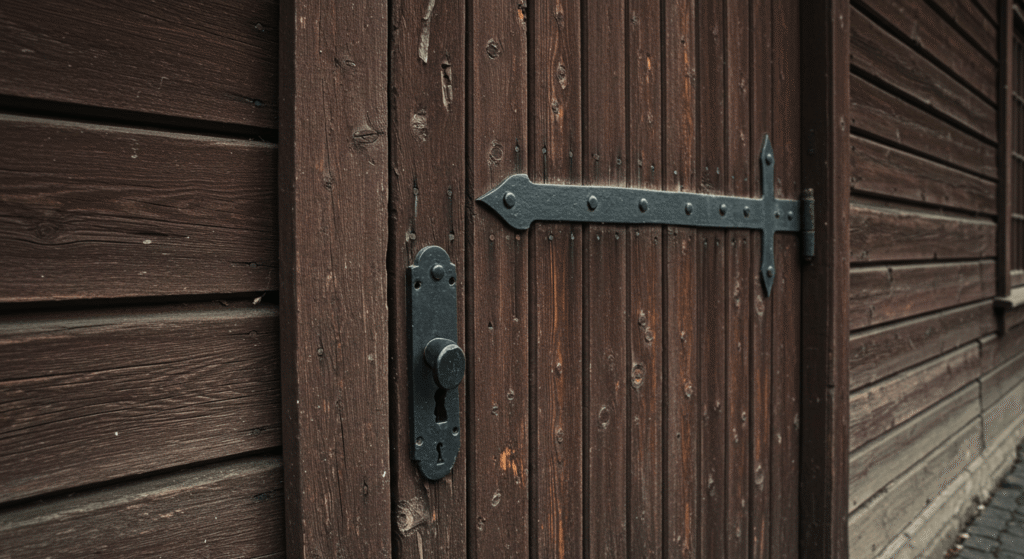
One of the most effective ways to stop a squeaky door is to lubricate the hinges. Proper lubrication reduces friction between moving parts, allowing your door to glide smoothly and quietly. Choosing the right lubricant and applying it correctly can make a big difference in eliminating that persistent noise.
Types of Lubricants That Work Best Without Mess
There are several types of lubricants that work well for door hinges, each with its own advantages. Some lubricants are oil-based, offering long-lasting protection but can be messy if over-applied. Powder lubricants are dry and less likely to drip, making them cleaner to use but may need more frequent application. Spray lubricants provide easy, even coverage and penetrate tight spaces but require careful use to avoid overspray. Selecting the right type depends on your preference and the condition of your door hinges.
How to Apply Lubricant for Maximum Effect
For the best results, apply lubricant directly to the hinge pins and the moving parts inside the hinge. Start by removing excess dirt or dust with a dry cloth. Then, use a small brush or applicator to target the hinge pin and inside surfaces evenly. Open and close the door several times to work the lubricant into all moving areas. Avoid over-applying, which can attract dust and grime, leading to further issues down the line.
How Often Should You Lubricate? Maintenance Schedule Ideas
Regular maintenance is key to keeping your doors quiet and functioning smoothly. For most homes, lubricating door hinges every six months is sufficient, but high-traffic doors may benefit from quarterly attention. During seasonal changes, especially in humid or dry climates, checking and lubricating hinges can prevent squeaks caused by environmental factors. Keeping a simple calendar reminder can help you stay consistent and avoid future squeaks.
| Lubrication Method | Pros | Cons |
|---|---|---|
| Oil-Based Lubricant | Long-lasting, penetrates well | Can be messy, may drip |
| Powder Lubricant | Clean application, dry | Needs frequent reapplication |
| Spray Lubricant | Easy to apply, reaches tight spots | Risk of overspray, can attract dust |
Step 3 — Tighten Loose Screws and Align the Door Frame
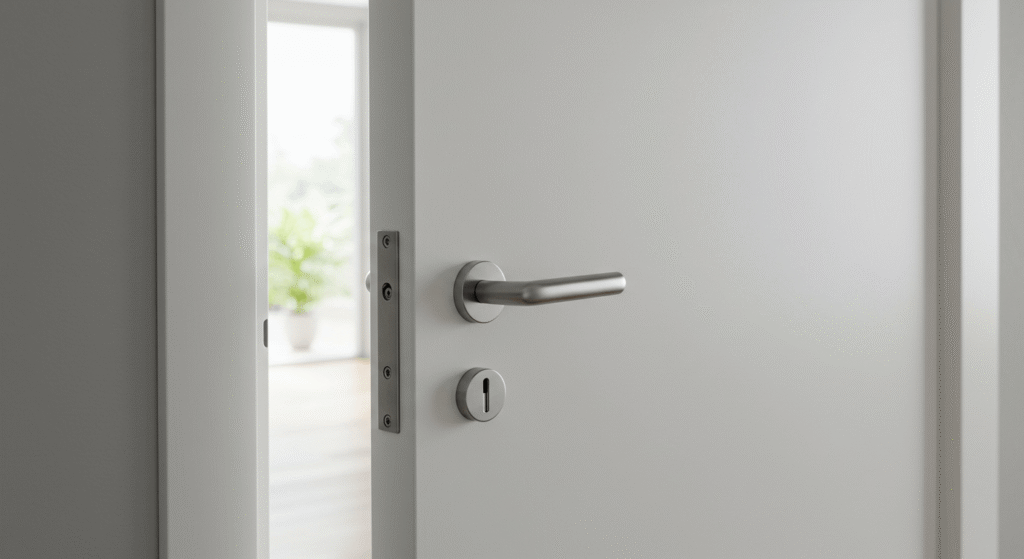
A squeaky door often results from loose screws or a misaligned door frame. Addressing these issues not only stops the noise but also improves the door’s overall function and longevity. This step involves a careful inspection and simple adjustments that anyone can perform with basic tools.
Identifying Loose or Missing Screws
Start by checking all the screws on your door hinges and frame. Loose screws allow extra movement, which causes friction and squeaking. Missing screws create instability, leading to misalignment and uneven pressure on the hinges. Use a screwdriver to gently test each screw — if it turns easily or feels loose, it needs tightening or replacement. Pay special attention to screws at the top hinge, as they often bear most of the door’s weight.
Simple Adjustments to Realign Your Door
If your door doesn’t close properly or rubs against the frame, realignment might be necessary. First, tighten all loose screws to stabilize the hinges. Then, check the door’s position relative to the frame. You may need to slightly adjust the hinges by loosening the screws, repositioning the door, and retightening. For doors that sag, adding a shim behind the hinge or adjusting the strike plate can help achieve proper alignment. These small tweaks reduce friction points that cause squeaking.
When to Call for Professional Help
While many door alignment fixes can be done at home, some situations require professional expertise. If your door is severely warped, the frame is damaged, or the squeak persists despite tightening and lubrication, it may be time to consult a specialist. Professionals can address structural issues, replace damaged hardware, or install new doors to restore smooth operation.
Step 4 — DIY Quick Fixes for Persistent Door Squeaks
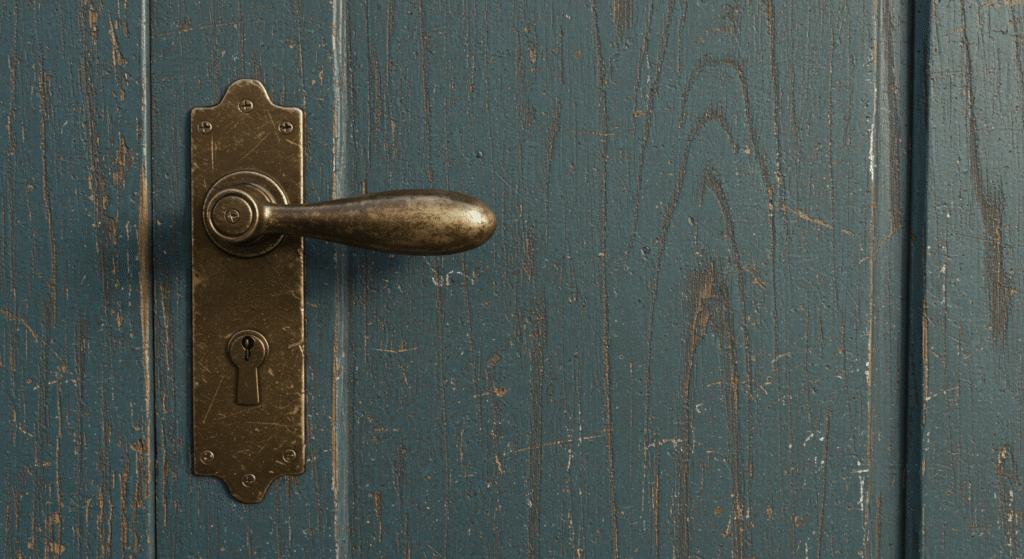
Sometimes, even after inspection and lubrication, a squeaky door can be stubborn. That’s where some creative DIY quick fixes come in handy. Using common household items, you can silence your door fast—sometimes with surprising results. These simple hacks are perfect for those moments when you need a quick, effective solution without extra tools or trips to the store.
Household Items That Can Help Silence a Door
Did you know that everyday items like soap or candle wax can reduce door squeaks? Rubbing a bar of soap along the hinge pins or the edges where the door meets the frame can create a thin, lubricating layer that reduces friction. Similarly, gently applying candle wax to the hinges can work as a natural lubricant. These quick fixes may not last as long as specialized lubricants but are great for immediate relief or when you’re short on supplies.
Temporary vs. Long-Term Solutions
While quick hacks like soap or wax are useful in a pinch, they usually provide only temporary relief. For a lasting fix, proper lubrication and hardware maintenance are necessary. Temporary solutions can sometimes mask underlying problems, so it’s important to follow up with thorough inspection and care. Knowing the difference helps you choose the right approach for your needs—whether it’s a fast, easy fix or a more permanent repair.
Fun Section: “Hack or Hack?” Mini Quiz on Quick Door Fixes That Work
Let’s test your knowledge! Which of these quick fixes actually help reduce door squeaks?
- Rubbing a bar of soap on the hinges
- Sprinkling baking soda on the door frame
- Applying candle wax to hinge pins
- Using cooking oil to lubricate the hinges
- Placing a piece of cloth between the door and frame
(Answer: Soap and candle wax work well; baking soda and cloth won’t help; cooking oil can cause grime build-up and is not recommended.)
Step 5 — Preventing Future Squeaks: Tips for Door Longevity
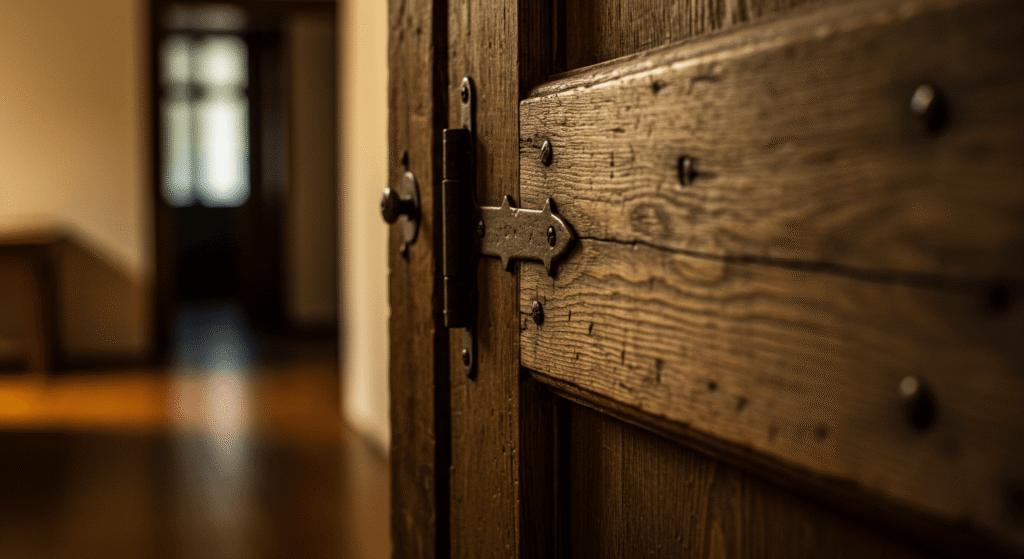
Once you’ve fixed your squeaky door, the next step is making sure it stays quiet for the long haul. Preventing future squeaks involves simple habits and regular care that protect your door hinges and keep everything moving smoothly. These easy tips help extend the life of your door while saving you from frequent repairs.
Regular Cleaning and Dust Removal from Hinges
Dust, dirt, and debris buildup inside door hinges are common culprits for squeaking over time. Make it a habit to clean your door hinges regularly by wiping them down with a dry or slightly damp cloth. Avoid letting dust accumulate, especially in high-traffic areas. For stubborn grime, a soft brush or a cotton swab can reach tight spaces. Keeping hinges clean ensures lubricants work effectively and reduces wear on moving parts.
Best Practices for Daily Door Use to Avoid Noise
How you use your doors can affect how long they stay squeak-free. Avoid slamming doors or forcing them open and closed quickly, as this stresses the hinges and can loosen screws. Gently open and close doors with steady, controlled motions to minimize wear and tear. Additionally, check periodically for any signs of misalignment or looseness and address these early before squeaks start again.
When a Squeaky Door Is More Than Just a Nuisance
A squeaky door is usually just an annoyance—but in some cases, it can signal deeper problems that go beyond noise. From reduced functionality to potential safety risks, a persistent squeak could be a warning sign. Knowing when to repair and when to replace can help you maintain a safer, more efficient home.
Signs Your Door Might Need Replacement
If your door continues to squeak despite cleaning, tightening, and lubricating, it might be time to consider a replacement. Signs that your door is past its prime include deep cracks or warping, hinges that refuse to stay tight, rusted or stripped hardware, and difficulty opening or closing even after realignment. These are more than just cosmetic issues—they often mean the door’s core structure has degraded. In such cases, replacing the door may be more cost-effective (and quieter) in the long run.
How Door Condition Impacts Home Security and Energy Efficiency
A worn, misaligned, or damaged door doesn’t just make noise—it also makes your home less secure and less energy-efficient. Loose hinges and gaps in the frame can allow drafts, increasing your heating and cooling costs. A door that doesn’t close or lock properly can compromise security, especially on exterior entries. Replacing a problematic door improves insulation, boosts curb appeal, and helps keep your household safer and more comfortable.
| Feature | Old Squeaky Door | New Well-Maintained Door |
|---|---|---|
| Noise Level | Constant squeaking and creaking | Silent, smooth operation |
| Door Alignment | Often misaligned or dragging | Properly aligned and balanced |
| Energy Efficiency | Poor insulation, drafty | Improved sealing, energy-saving |
| Home Security | Weak hinges, unreliable lock | Secure fit, solid structure |
| Visual Appeal | Worn, possibly damaged finish | Clean, fresh appearance |
Troubleshooting: What If Your Door Still Squeaks?
You’ve cleaned, tightened, and lubricated—but that squeaky door still won’t shut up? Don’t worry—you’re not alone. Sometimes squeaks linger due to less obvious issues that basic fixes can’t solve. In this section, we’ll walk you through how to troubleshoot like a pro and avoid the most common mistakes that keep doors noisy.
Common Mistakes to Avoid When Fixing a Squeaky Door
It’s easy to overlook small but crucial steps when trying to silence a squeaky door. Here are a few frequent missteps:
- Using the wrong lubricant: Some household oils can actually attract dust and grime, making the problem worse over time.
- Over-tightening screws: This can strip the wood or warp the hinge plate, leading to improper alignment.
- Skipping cleaning before lubrication: Applying lubricant on dirty hinges just seals in the grime, creating more friction.
- Ignoring hinge alignment: Even perfectly lubricated hinges will squeak if the door rubs unevenly against the frame.
Avoiding these pitfalls can save you time and frustration in the long run.
How to Diagnose Hidden Causes (e.g., humidity, warped wood)
When all else fails, the issue may be something harder to spot. Environmental factors like humidity can cause the wood in your door or frame to swell or warp, making it rub in places it didn’t before. You might also have an uneven floor or settling foundation causing subtle misalignment. Run your hand along the edges of the door as it closes—do you feel resistance? Are there visible rub marks on the paint or frame? These are signs the problem lies deeper than just the hinges.
Other sneaky culprits:
- Temperature changes: Can expand or contract materials seasonally.
- Paint buildup: Around hinges or frame, causing extra friction.
- Old hardware: Worn-out hinges may need replacing, not just lubricating.
Final Thoughts: Say Goodbye to That Squeaky Door for Good
A squeaky door might seem like a small problem, but as you’ve seen, it can signal deeper issues—and it’s definitely not something you have to live with. From identifying the root cause to using smart DIY fixes and preventive care, silencing that annoying creak is totally doable with just a few tools and a bit of attention. By following these steps, you’re not just eliminating a noise—you’re extending the life of your door, improving your home’s comfort, and maybe even boosting its security and energy efficiency. So grab that screwdriver or dab of wax, and say goodbye to the squeak once and for all.

